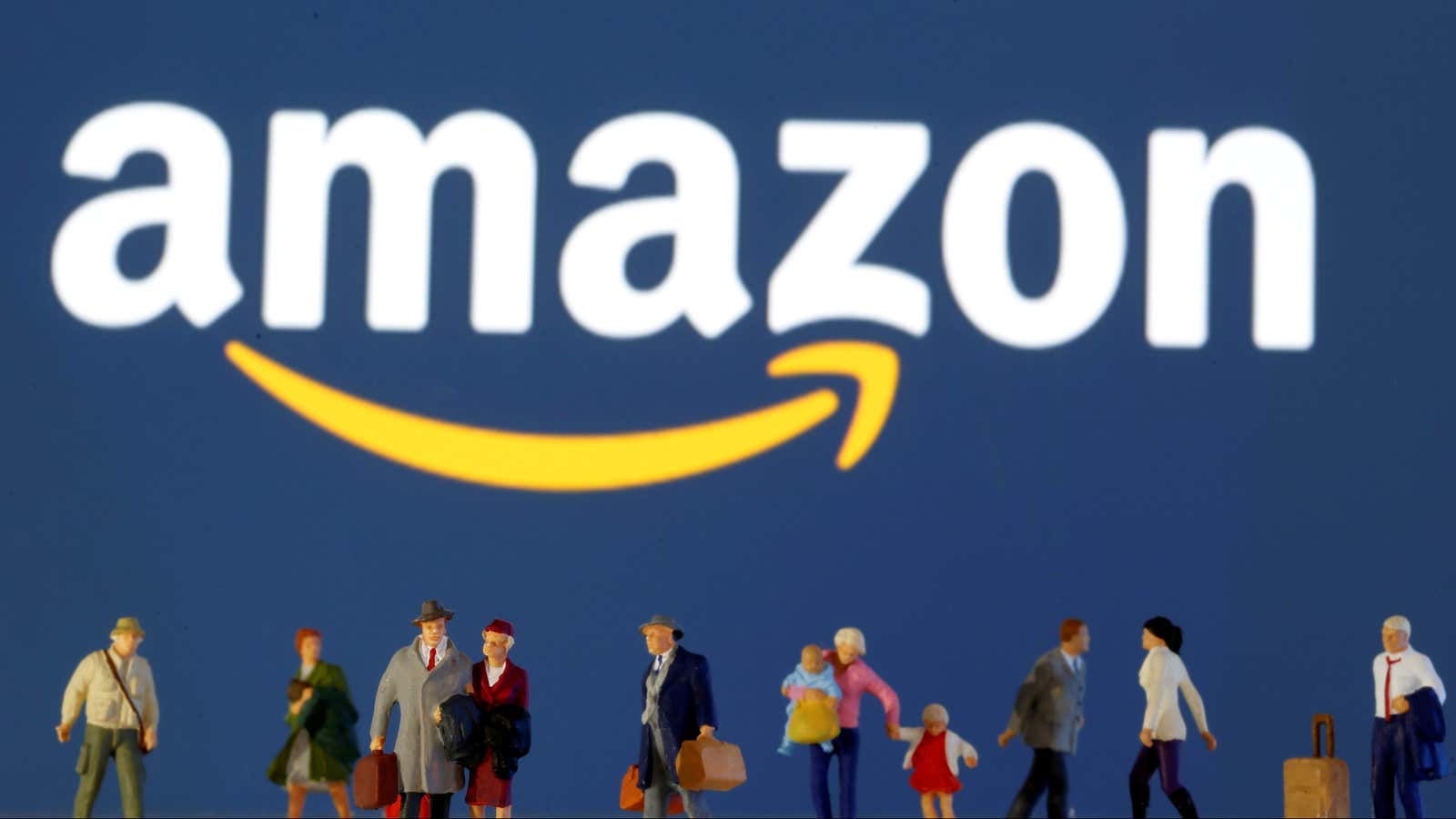Having established itself as one of the leading e-commerce players in India, Amazon is now casting a wider net in the country.
The Seattle-based company has been gradually expanding its fintech offering in India, organically as well as through acquisitions. The move is a “natural extension” that will help Amazon shift from “mind space to wallet space,” said Krishna Kumar, an independent fintech and digital services consultant. “Payments complete shopping from viewing to sale,” Kumar added.
In August, Amazon launched “Gold Vault” in India, where users can buy digital gold for as little as Rs5. This comes just a couple of months after Amazon started selling auto insurance in India.
Besides these, the Jeff Bezos-led firm now allows Indian users to book movie tickets and flight tickets, as well as pay their electricity, water, cooking gas, broadband, and satellite TV bills. The company has also tied up with ICICI Bank to provide its Prime customers a credit card that offers reward points. And at least two mutual fund platforms have launched products in tie-ups with Amazon.
Amazon Pay in India
Amazon made its big fintech move in India with the launch of digital wallet Amazon Pay in December 2016, just weeks after the Narendra Modi government announced a plan to demonetise two high-value notes. The government’s sudden decision sucked out 86% of the total currency in circulation, which rendered millions of Indians cash-strapped, and many flocked to payment apps to avoid serpentine queues outside banks and ATMs.
However, over time, growth in the Indian digital payments space became sluggish owing to infrastructure hurdles.
Understanding that just a digital wallet isn’t going to cut it, Amazon has become more bullish about creating sophisticated fintech products in recent years.
“Once you have established the fintech arm, it is all about offering new products at a zilch of the total establishment cost,” said Nilesh Parekh, head of cards at African marketplace Jumia. But of course, products have to be customised to the meet local requirements, and with geography as vast as India’s, it can be a tough ask, he added. Gold, for instance, is a good bet given Indians’ obsession with the yellow metal. But motor insurance can be trickier to navigate as trends show that Indians tend to not renew their policies in time.
“These product development and investment decisions reveal that Amazon isn’t building a traditional bank that serves everyone,” said Sampath Kummam, lead business analyst at IT services and software firm Unisys. “Instead, Amazon has taken the core components of modern banking experience and tweaked them to suit Amazon customers.”
Also, additional services such as gold and auto loans can help in making money in an otherwise loss-making fintech business. Digital payment in itself “does not provide solid margins, and is not typically better than e-commerce,” Dennis Keller, founder or startup support platform Denkventure, said while citing the massive losses of one of India’s largest fintech firm Paytm. Complementary services like insurance and lending “can be high-margin with high demand,” he added.
Additionally, India has a massive fintech potential that Amazon would not want to ignore. The Indian digital payment market is expected to more than double in value to $135 billion within the next four years, a recent PwC-ASSOCHAM study estimated.
It is no wonder then that lately a majority of Amazon’s global fintech investments are concentrated on India. Most recently, in January, Amazon infused an additional Rs1,355 crore into Amazon Pay India.
Indian fintech challenges
Since the spread of Covid-19, e-wallets in India have witnessed a sharp surge in transactions. While there is no better time to woo customers, Amazon has several challenges.
The company faces severe competition from deep-pocketed and fierce rivals, including Softbank-backed Paytm, Walmart-owned PhonePe, and Google Pay. And the most daunting of rivals is still waiting in the wings: When Facebook’s WhatsApp Pay finally launches, it’ll find a ready audience in 400 million Indians.
There are also infrastructural and security hurdles that face the entire fintech ecosystem in India. Plus, India is still largely a cash-centric nation where 190 million Indian adults are still unbanked. Amazon has been trying to bridge this gap with experiments like 2018’s Doorstep feature that allowed customers to load money onto their Amazon Pay wallets by using a cash pickup service.
The market is ripe for disruption on the merchants’ side, too. “India has an enormous MSME credit gap. A quarter of the MSME merchants are already on Amazon,” said Anand Raman, financial sector specialist at think tank Consultative Group to Assist the Poor. “With a global anti-China push, this is Amazon’s chance to beat Alipay.”
